Spotlight on Iconic Knives: Famous Blades in American History
27th Mar 2025
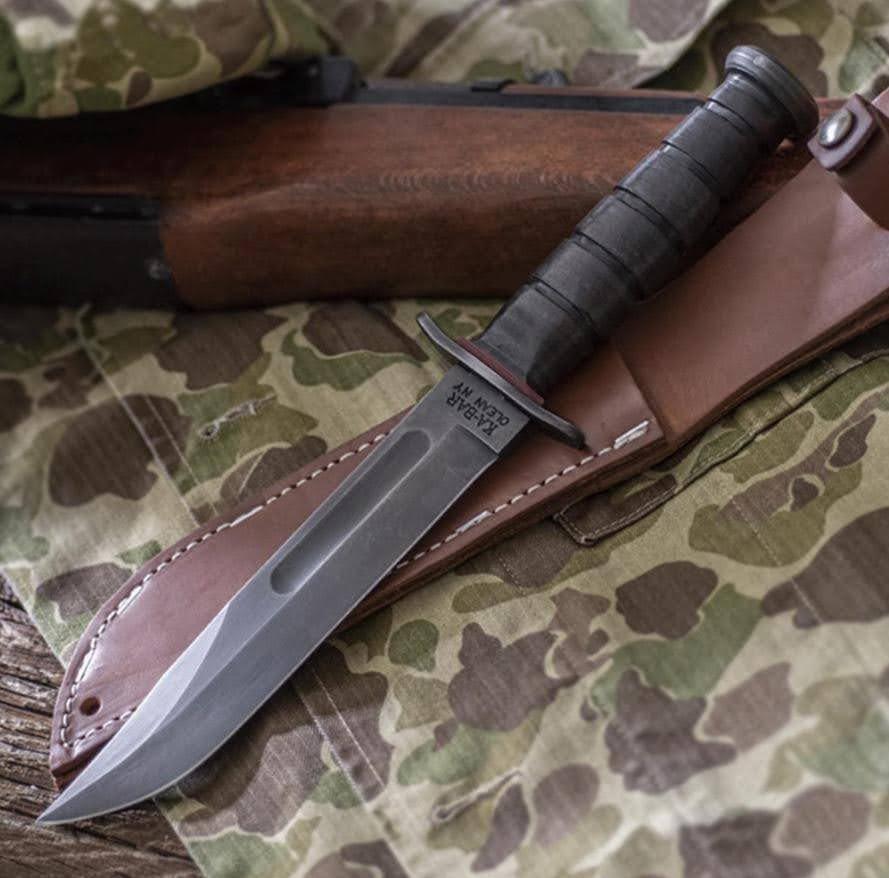
KA-BAR Red Spacer Fighting Knife
Knives have been indispensable tools and symbols throughout American history, shaping the nation’s culture, survival, and identity. From frontier exploration to military campaigns, iconic blades have left an indelible mark on the American story. In this blog, we’ll spotlight three historically significant knives: the Bowie knife, the KA-BAR, and the Green River knife, to explore the origins, uses, their portrayals in media, and enduring roles in American culture.
The Bowie Knife: The Frontier Legend
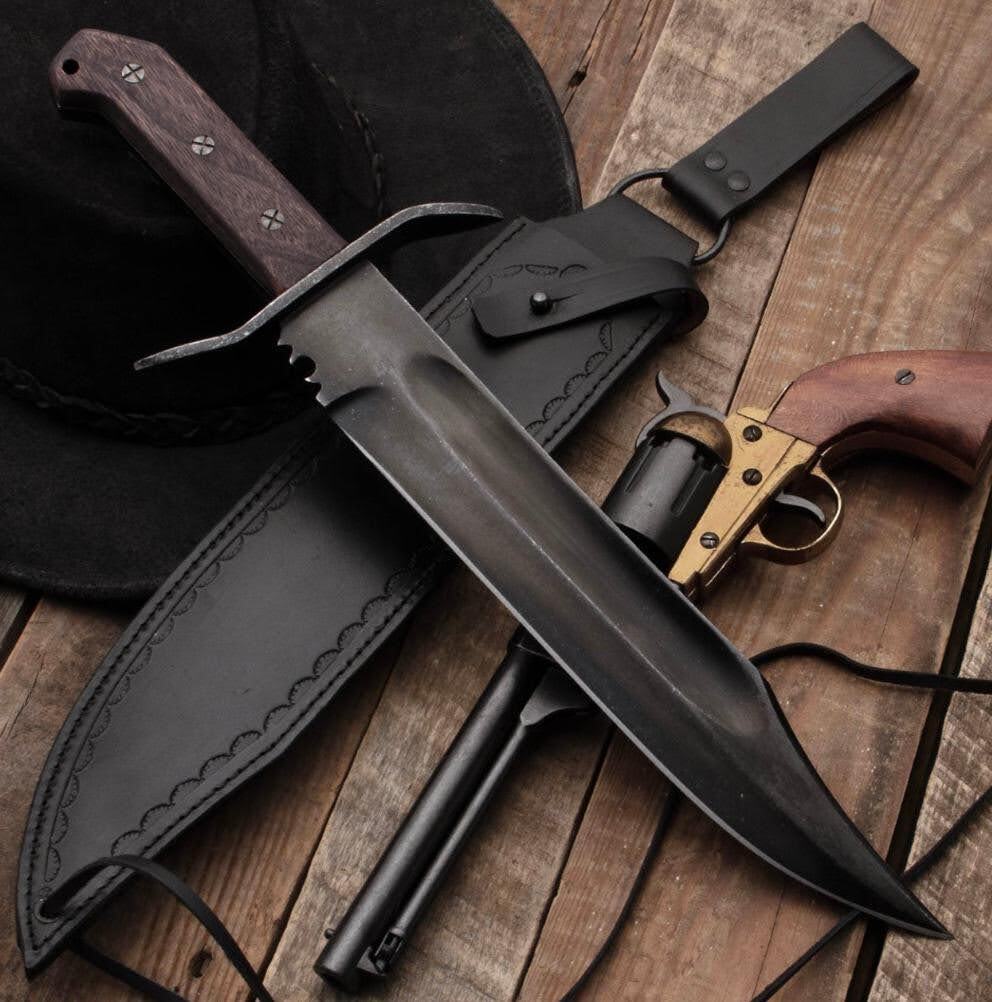
Origins and Design
The Bowie knife, named after frontiersman Jim Bowie , emerged in the early 19th century as a quintessential American blade. The knife gained fame after the 1827 Sandbar Fight , where Bowie wielded a large, sturdy knife that Jim or his brother likely designed. The knife typically features a 9 to 12-inch blade with a clipped point, a crossguard, and a robust handle of wood or bone, balancing utility and combat readiness.
The Bowie knife was a versatile tool, ideal for chopping, skinning, and self-defense. Its heavy blade suited frontiersmen, trappers, and soldiers navigating the wilds of early America.
Uses and Historical Impact
On the frontier, the Bowie knife was a survival essential, used to clear brush, prepare game, and defend against threats. During the Texas Revolution (1835–1836), it became a symbol of rugged individualism, especially after Bowie’s death at the Alamo, where his knife was reportedly by his side.
The KA-BAR: The Military Icon
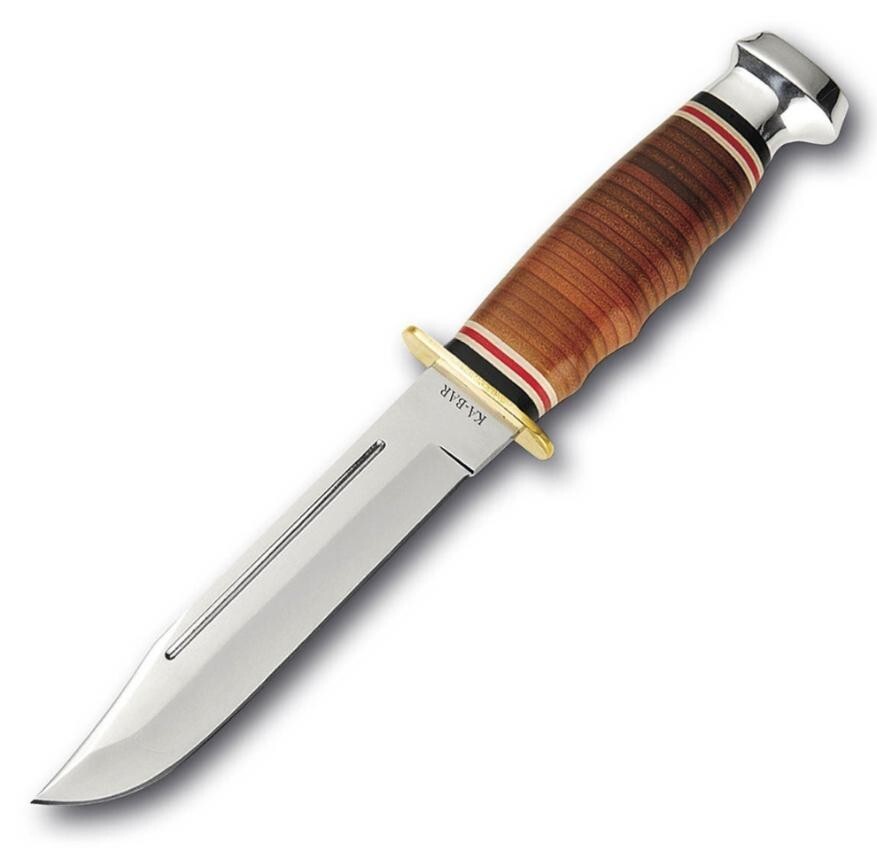
KA-BAR USMC Classic Stacked Leather Grip
Origins and Design
The KA-BAR, officially the USMC Fighting Utility Knife, became a military legend during World War II. The knife was introduced in 1942 by the Union Cutlery Company (later branded Ka-Bar) and features a 7-inch carbon steel blade with a clip point, a stacked leather handle, and a sturdy crossguard. Designed for the U.S. Marine Corps, it balanced combat and utility functions.
Its durability made it a trusted tool in the Pacific Theater’s harsh conditions, earning its name from a trapper’s tale of a “k-a-bar” (kill a bear).
Uses and Historical Impact
The KA-BAR served soldiers in combat for close-quarters fighting and in the field for tasks like opening rations or cutting rope. Its reliability in corrosive jungle environments made it indispensable. Post-war, it became a symbol of Marine Corps pride, often passed down through generations.
The Green River Knife: The Mountain Man’s Choice
Origins and Design
The Green River knife , produced by J. Russell & Company in the 1830s, was a staple for mountain men during the fur trade era. Named after Wyoming’s Green River, it featured a 5 to 8-inch carbon steel blade with a straight or curved edge and a simple wooden handle, often without a guard for ease of use.
Affordable and reliable, it was accessible to trappers, traders, and Native Americans, prioritizing function over ornamentation.
Uses and Historical Impact
Mountain men relied on the Green River knife for skinning pelts, preparing food, crafting traps, and defense. Its lightweight design suited long expeditions, and its sharp blade handled rugged tasks. Associated with figures like Kit Carson , it became a symbol of frontier self-sufficiency.
Knives in Popular Culture
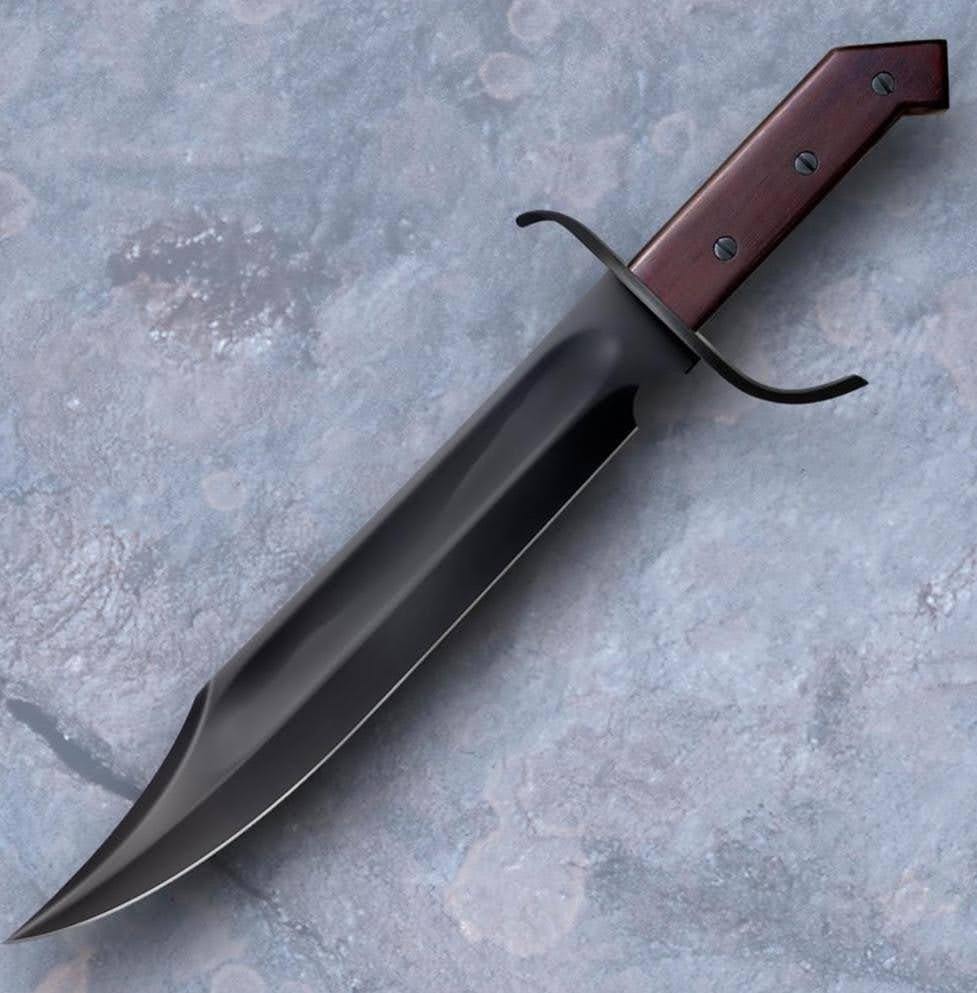
These iconic knives have transcended their practical roles to become cultural symbols in American media, influencing how we perceive the nation’s history.
- Bowie Knife: The Bowie knife’s larger-than-life reputation was amplified by 19th-century dime novels, which portrayed it as the weapon of heroic frontiersmen. In modern media, it appears in films like The Alamo (1960 and 2004), where Jim Bowie’s knife is a focal point, and in TV shows like Deadwood, emphasizing its rugged allure. Video games such as Red Dead Redemption feature Bowie knives, reinforcing their association with the Wild West. Its distinctive design makes it a favorite for collectors and reenactors, embodying the adventurous spirit of the frontier.
- Ka-Bar: The Ka-Bar’s military legacy shines in war films like Saving Private Ryan and The Pacific, where it symbolizes the grit of American soldiers. In video games like Call of Duty, the Ka-Bar is a staple melee weapon, celebrated for its reliability. Its iconic status is further cemented in military memoirs and documentaries, where veterans recount its lifesaving role. The Ka-Bar’s presence in popular culture underscores its image as a tool of courage and resilience.
- Green River Knife: Though less flashy, the Green River knife appears in historical dramas and novels about the fur trade, such as The Revenant, where it represents the mountain man’s practical ethos. In bushcraft and survivalist media, like YouTube channels and survival shows, modern replicas are praised for their simplicity and effectiveness. The knife’s understated design resonates with enthusiasts seeking to recreate the mountain man lifestyle, linking it to America’s pioneering past.
These portrayals have elevated the knives to cultural icons, making them recognizable symbols of American history and values in global media.
The Role of Knives in American Culture
The Bowie, KA-BAR, and Green River knives have shaped American culture by embodying the values of their eras. The Bowie knife symbolizes the untamed frontier, where survival demanded versatility and courage. The KA-BAR reflects the determination of American soldiers, particularly during World War II. The Green River knife represents the practicality of those who carved out a living in the wilderness.
These blades have become cultural touchstones, appearing in museums, reenactments, and media, preserving stories of exploration, conflict, and survival. They reflect America’s ethos of self-reliance, empowering individuals to overcome challenges and shaping a national identity rooted in independence.
Preserving the Legacy
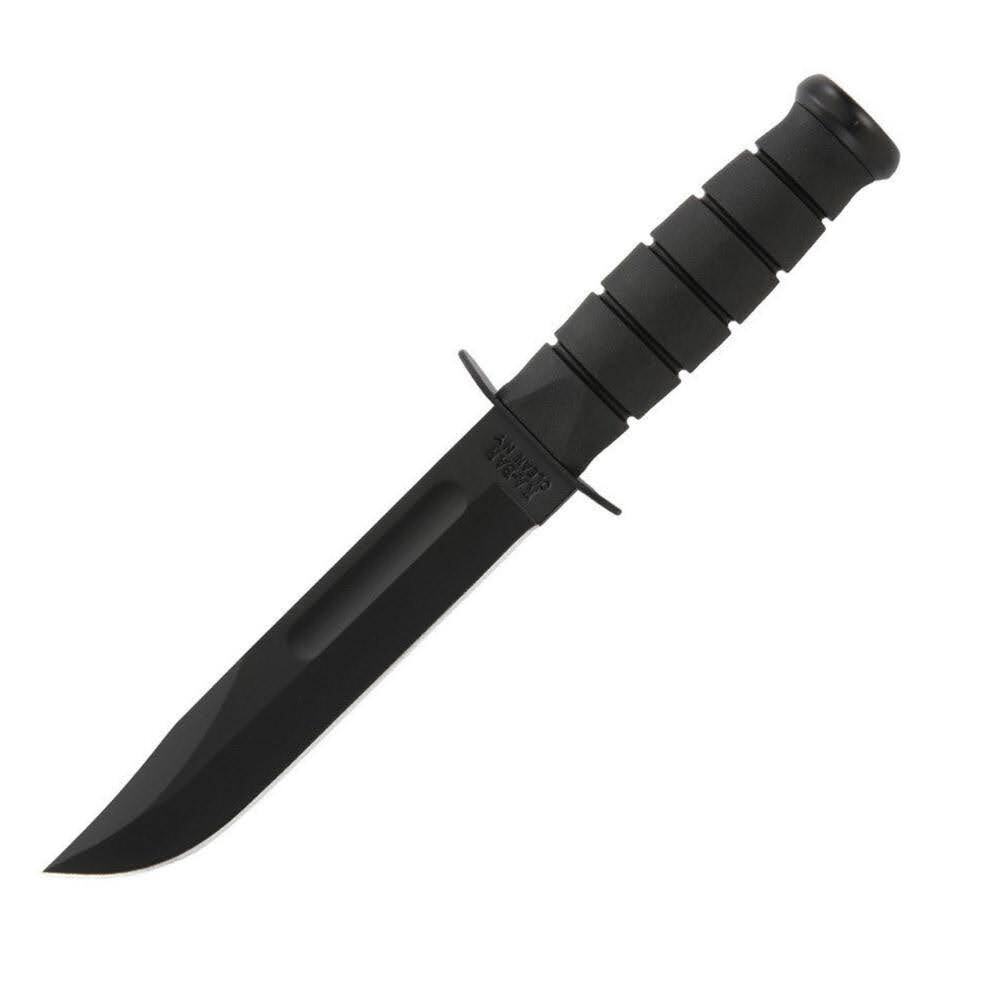
KA-BAR Classic Kraton Grip Knife
Owning a replica of an iconic American knife allows you to connect with this rich history. To maintain their condition, clean blades with a soft cloth and a mild polish, store them in a dry, stable environment, and handle them with care. Proper care ensures these replicas remain pristine, keeping their stories alive for future generations.
Start Your Collection Today
Conclusion
The legacy of America’s iconic knives endures through high-quality replicas that capture their historical essence. Whether you’re drawn to the rugged charm of a Bowie knife, the battle-tested reliability of a KA-BAR, or the simple functionality of a Green River knife, there’s a blade waiting to become part of your collection. Visit www.atlantacutlery.com to explore a wide selection of meticulously crafted replicas from American history and bring a piece of the past into your hands today.


 Gift Cards
Gift Cards